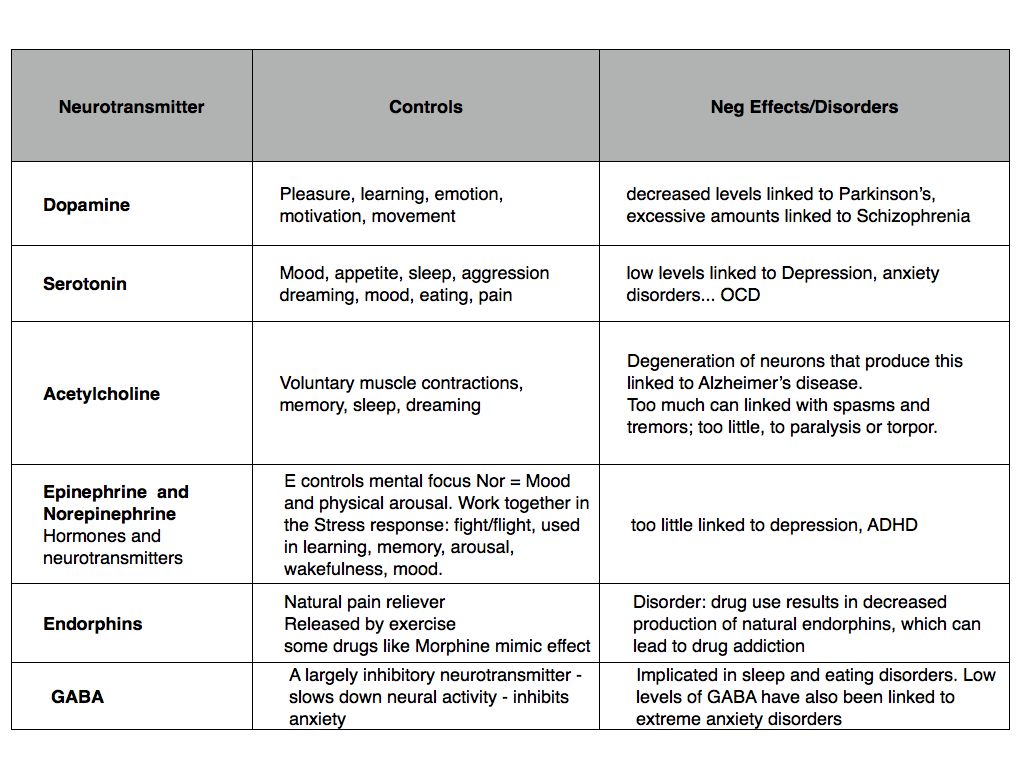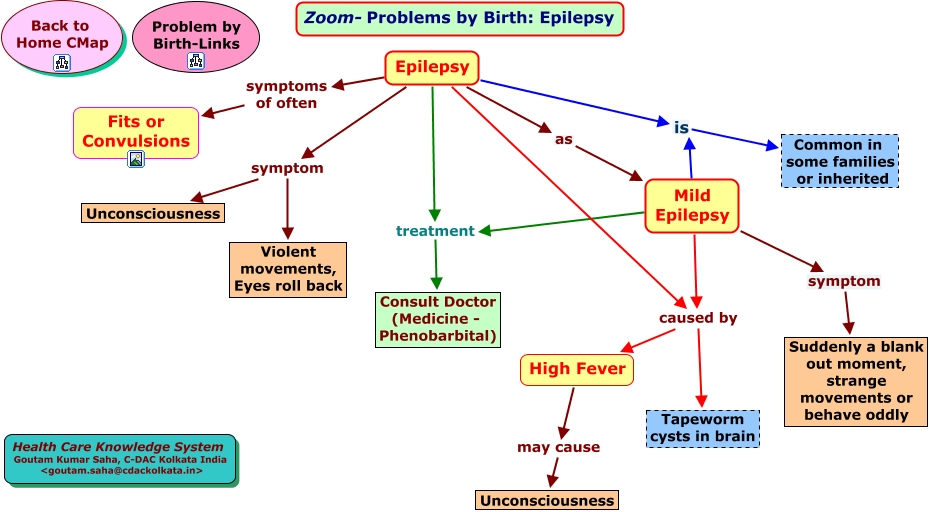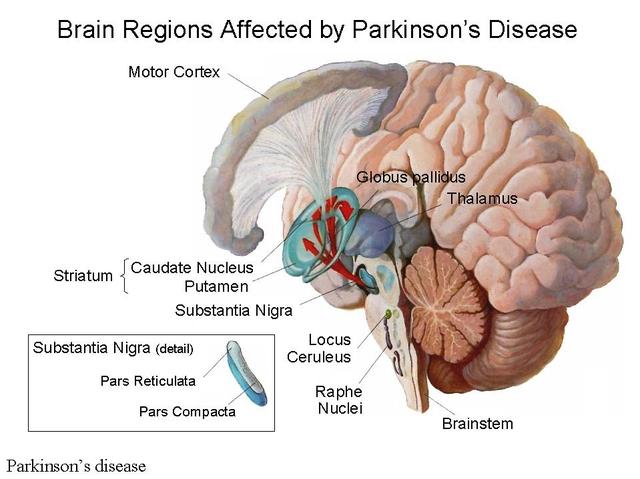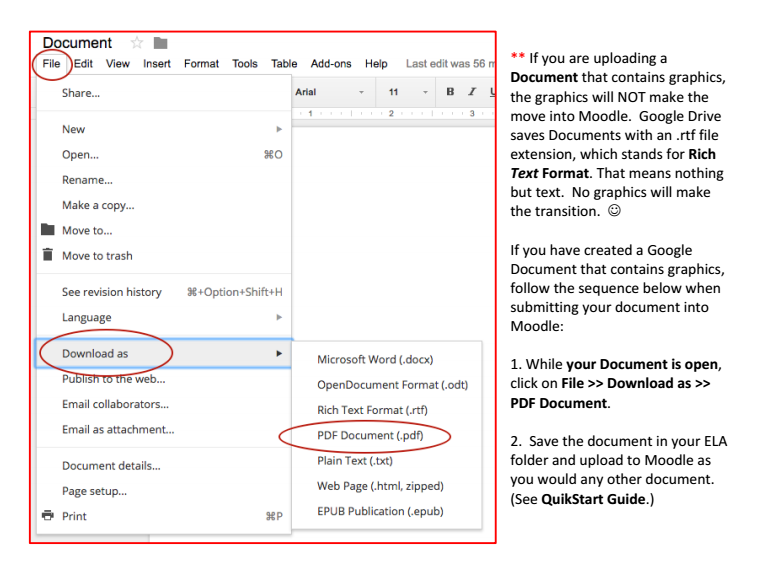2. Brain Disorder, Disease, Aging and Damage
| Site: | MoodleHUB.ca 🍁 |
| Course: | Personal Psychology 20-RVS |
| Book: | 2. Brain Disorder, Disease, Aging and Damage |
| Printed by: | Guest user |
| Date: | Friday, 26 December 2025, 9:31 AM |
1. Brain - disorders
According to current medical thinking, actual physical problems in the brain may cause many behavioural disorders in humans. Problems with depression, insomnia and other disorders have been linked to the presence or absence of certain chemical neurotransmitters in the brain. However, it is not clearly understood if the unusual levels of transmitters is the cause of disorder or just a side effect of the disorder itself.
Review the following effects of neurotransmitters focusing on the problems associated with each type.

Check out this cool interactive website to see the links between these brain chemicals and behaviour.
2. Brain Disease and Aging - Epilepsy, Alzheimers, Parkinsons
Epilepsy Is a brain disorder that can affect an individual's behaviour.

Changes in the brain as a result of aging can also affect funtion and behaviour. Alzheimer's is a neurodegenerative disease that affects most people in old age. It can, however occur in individuals as young as 30. Take this brain tour (Click on page 8-14 on the site) to see the causes and effects of Alzheimer's disease.
Another disease associated with aging is Parkinson's, although this disease can also occur as early as 30, as in the case of the actor Michael J Fox.

There are many other disorders and diseases of the brain which are beyond the scope of this class.
3. Brain Damage - overview
Damage to different parts of the brain causes different effects on a person's behaviour and personality.
This video summarizes the effects of damage to the parts.
4. Brain Damage - Frontal lobe
The brain controls many functions in our body, as well as controlling our behaviour and moods. Damage to areas of the brain can have differing effects.
On September 13, 1848, railroad worker Phineas Gage was working on a railway site when an explosion sent a three and a half foot iron rod through Gage's skull, entering his left cheek and exiting through the top of his head.
Amazingly Gage survived the accident, but the damage to his frontal lobe left his personality and demeanor significantly changed. This led doctors to study the function of different parts of the brain and the effects of damage.
Explore this site, by clicking on the "explore our 3D brain", to review the function of each part and discover the effects of damage.
5. Brain Damage - temporal and language areas
After studying Gage, medical professionals began to study the effects of other types of brain injury and behaviour.
The temporal lobe is known as the area for language, smell and hearing. Damage to a specialized part of this lobe called Wernicke's area can cause difficulties in speech. This area is connected to another language area called Broca's area. Damage to these areas causes different types of language difficulties. Damage is caused by either accidental physical injury or most often by stroke. A stroke occurs when the blood supply is cut off to certain parts of the brain.
Broca's ephasia. In this type, patients can understand spoken words but are unable to get words out properly. This short documentary describes the recovery of an actor who had a stroke and was affected by brocca's aphasia.
In Wernicke's ephasis sufferers may ramble in long sentences and make words up.
6. Assignment
Research one of the following topics and thoroughly explain it in the format of an infographic.
Topic 1. Define and describe neurotransmitters. Identify and discuss five kinds and indicate how each controls behaviour.
Then elaborate on the disorders linked to each.
Topic 2. Identify a brain injury or brain disorder/disease. Explain the impact this particular disease/disorder has on the brain
and how it affects human behaviour.
Topic 3. Describe the structure and function of the brain. State the function of each part and describe how it
affects behaviour. Explain the effects of damage to each part of the brain.
Click on the following link for detailed instructions on Brain Disorders Infographic for your Biological Influences project.
Here are some student exemplars for you to look at:
Once completed, label your assignment U4L2infographic_surname and submit to the assignment folder U4L2 Biological Infographic.
All the infographic projects should follow these guidelines:
- Include relevant images or other visuals and references for websites.
- Include your personal opinions and concise explanations about your topic.
- Try to use a template or a large document - such as a poster for your ONE page presentation.
- Show the information in a visual way and maximize your page space with lots of images and information.
- Avoid huge paragraph explanations. Simplify and topic use topic related pictures, arrows and
shapes to help your audience better understand your topic. (think of them as a digital poster showing what you know and think!). - How to Create an Infographic
All the infographic projects should be submitted as a PDF so that they do not lose formatting ( up to half of your marks are related to the "look" and design of your infographic!) An .rtf file does not contain any graphics, so make sure you save it as a PDF.
If you are creating your assignment in the google drive, save it as a PDF by following these instructions: Converting a google doc to a PDF. Submit the PDF file in the assignment folder.

Watch these short videos to learn how to save as a pdf if you don't know how. Keep in mind that although the procedure will be similar, it often looks sightly different depending on what program and what operating system your computer is using. Ask your supervisor for help if you are still having trouble.
How to save Word as a pdf...
https://www.youtube.com/embed/x99zwqxV1JM?rel=0
How to save Pages as a pdf...